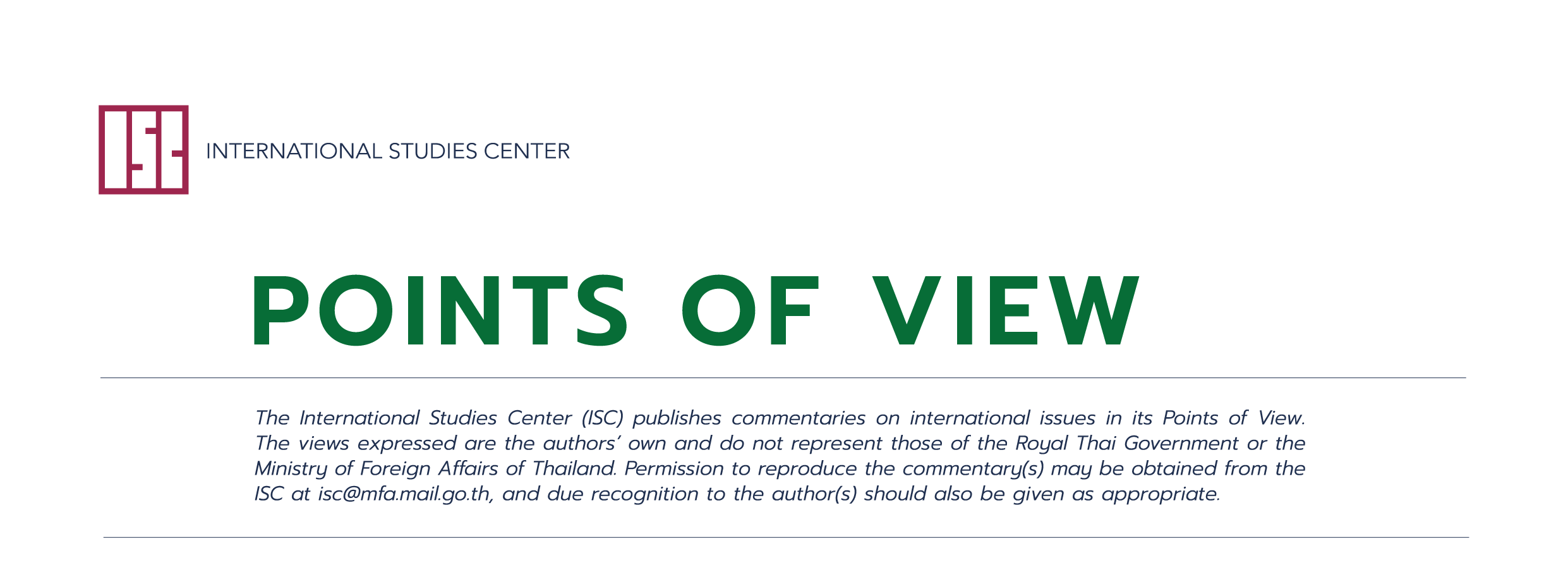Thailand's Perspective on ASEAN Centrality | Kavi Chongkittavorn
Thailand's Perspective on ASEAN Centrality | Kavi Chongkittavorn
วันที่นำเข้าข้อมูล 17 Aug 2021
วันที่ปรับปรุงข้อมูล 14 Dec 2022
 |
No. 6/2021 | August 2021
Thailand's Perspective on ASEAN Centrality
Kavi Chongkittavorn*
(Download .pdf below)
Recent developments inside Myanmar have raised many questions about the relevance of ASEAN centrality. Critics have been very vocal in responding to ASEAN’s engagement with the military regime in Naypyidaw. Quite rightly, they have focused exclusively on the bloc’s speed and scope of reactions. And they have been disappointed.
It is understandable why the prevailing sentiment is that ASEAN is good for nothing. The 10-member states just talk but take no action to support the bloc’s centrality. Given its location at the heart of Southeast Asia, Thailand knows its strategic value very well. So, it is not surprising that Thailand constantly calls for the strengthening of ASEAN centrality. Without it, ASEAN will not have any bargaining power with its dialogue partners.
The current strategic situation means that ASEAN is under huge pressure from major powers wanting to extend their influence at the expense of others. It is important for ASEAN to assert itself and take up a leadership role to prevent major clashes between two rival powers.
ASEAN is now caught between two security frameworks, one American centric, the other Chinese centric. The US has been associated with security in the region since World War II and the American military presence has guaranteed peace and stability for over half a century. However, the US power is now being challenged by the rise of China and other emerging powers. Washington does not have the kind of power projection and outreach it used to enjoy.
In the case of China, the rise has been fast and extensive. Beijing moves quickly in all dimensions, especially when other powers are facing domestic hurdles both in terms of politics and economically. China has seized the opportunity to offer the region all sorts of economic links and cooperation both within bilateral frameworks and more broadly through the global Belt and Road Initiative.
China has a clear strategic view of the region in the future. Beijing hopes it can assert its influence and be recognised by the US as the power in the region. For now, China has been able to put its money where its mouth is. The overwhelming support of the Asia Infrastructure Investment Bank (AIIB) has been unprecedented. It serves as a testimony to how China can win big in the global stage with sensible ideas. Earlier, no one would have believed that the AIIB could make such a dramatic transition and gain worldwide recognition with a total of 103 members.
However, as a key member of ASEAN, Thailand feels that ASEAN has to take the lead and balance relationships with the US and China. ASEAN is the only acceptable balancing wheel for the two powers as the bloc does not choose sides but rather collaborates with them.
Thailand has continuously urged ASEAN to maintain internal centrality with better thinking and decision making before engaging with the outside world. An ASEAN that can take decisions on key global issues in timely ways would serve as a reminder of the leadership role of the bloc.
Despite increased international pressure to deliver a quick-fix solution to regional issues, ASEAN has resisted that kind of temptation. The bloc has chosen to adhere to the founding principles and spirit of the Bangkok Declaration and Treaty of Amity and Cooperation in Southeast Asia (TAC) of 1976. The cardinal principles of non-interference in internal affairs and consensus-making have been constantly criticized as the grouping’s Archilles’ heel by the West in handling emergencies and unexpected developments such the outbreak of coronavirus and the conflict in Myanmar. Albeit their criticism, overall support of ASEAN centrality and its approach remain unchanged.
At the recent 54th ASEAN annual conference in Brunei Darussalam, the grouping admitted the UK as its 11th dialogue partner as part of its outreach to powerful external powers after a three-decade moratorium. The enlargement of key dialogue partners also accompanied the growing numbers of signatories to the TAC. Today, 49 countries including the 10 members of ASEAN, have acceded to this regional code of conduct. In the past 10 years, these numbers have increased, indicating the universality of the TAC principles and spirit. In 1992, ASEAN agreed to allow non-ASEAN members to accede to the treaty. China and India took the lead and other major powers followed. All members of UN Security Council and other UN members covering all geographic locations have also acceded to the TAC.
In the near future, the ASEAN profile on the international arena will also depend on the TAC’s recognition. In 2016, during the ASEAN annual meeting in Vientiane, the bloc’s leaders agreed to explore a legally binding instrument building upon the TAC for a broader region. As such, ASEAN with its centrality would be able to further prevent war and build a rules-based regional order to maintain peace and stability.
[*] A veteran journalist on regional affairs